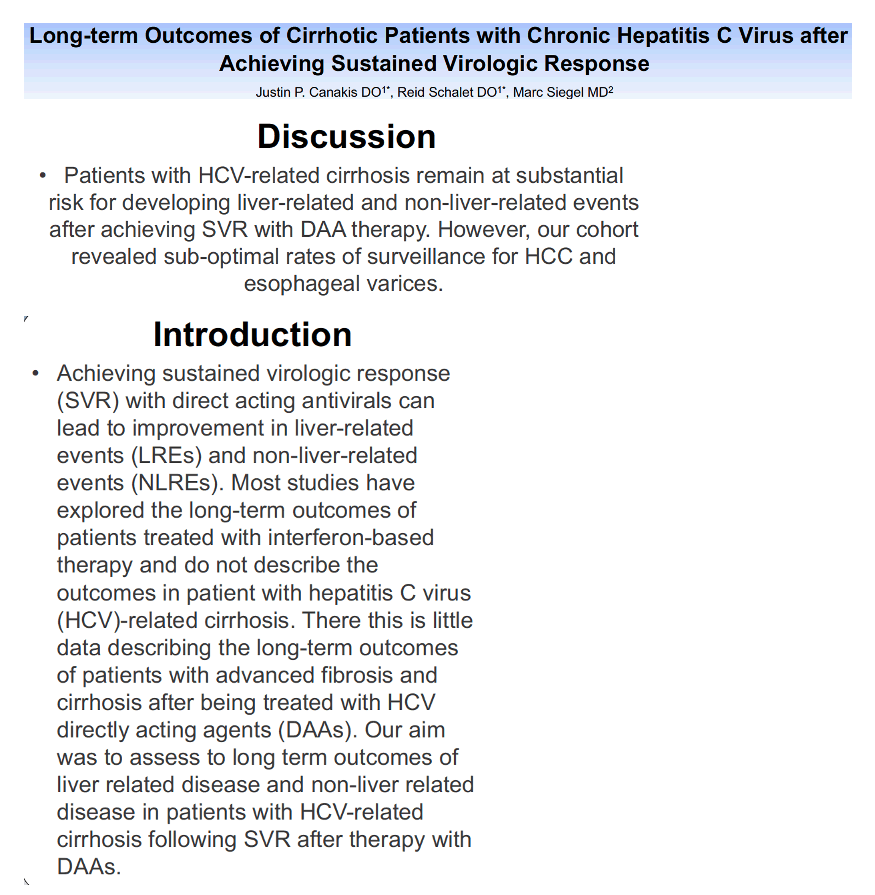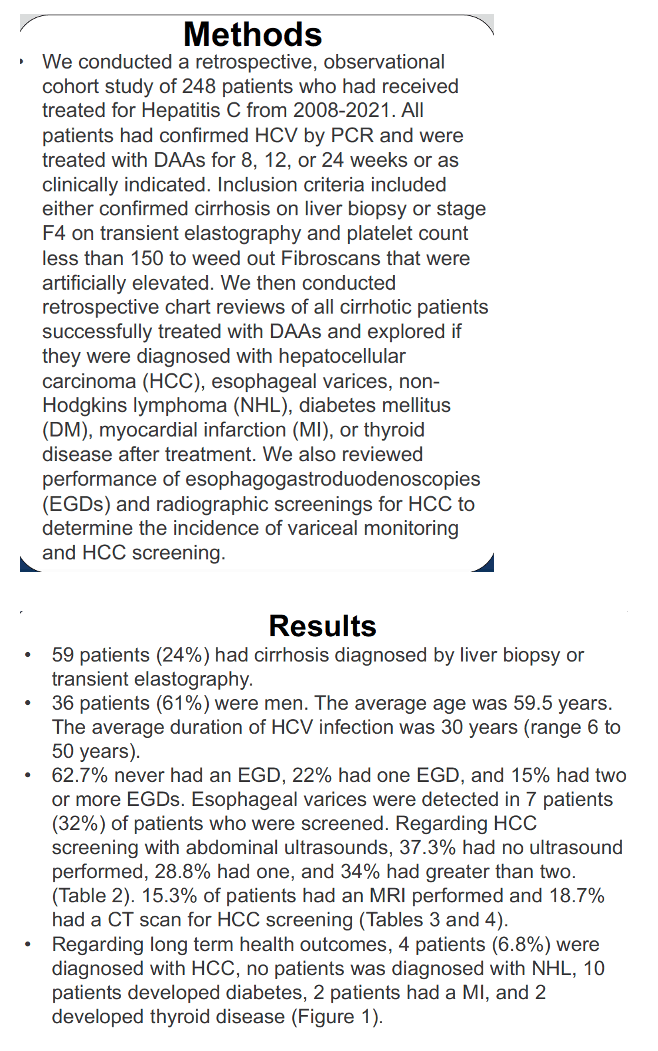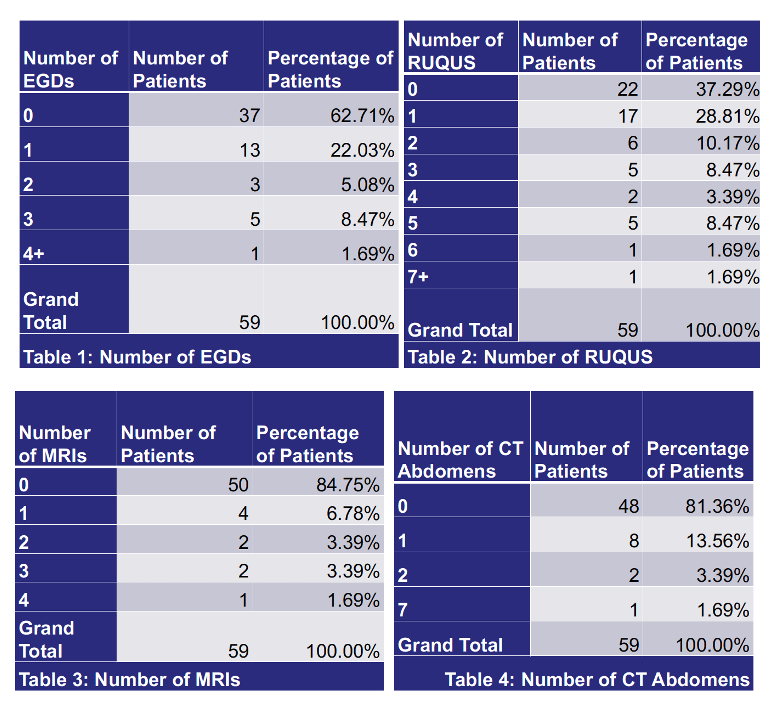 |
 |
 |
| |
Poor Followup After HVC SVR: High Rate of Liver and Nonliver Problems After SVR in People With Cirrhosis
|
| |
| |
AASLD 2023, The Liver Meeting, November 10-14, 2023, Boston
https://www.aasld.org/the-liver-meeting
Mark Mascolini
Serious morbidities-including hepatocellular carcinoma (HCC), diabetes, and myocardial infarction (MI)-dogged people with HCV cirrhosis who had a sustained virologic response (SVR) to direct-acting antivirals (DAAs) [1]. This 59-person single-center study found that almost two thirds of this group never got esophagogastroduodenoscopy (EGD) after SVR to scan for esophageal varices. More than one third never had ultrasound monitoring, and more than 80% never had a follow-up MRI or abdominal CT, all of which can screen for HCC.
Researchers from George Washington University in Washington, DC reminded colleagues that improvement in liver- and nonliver-related complications often follows SVR with DAAs. Because much research on this question does not detail long-term outcomes in people with advanced fibrosis and cirrhosis after SVR, the George Washington team decided to address that issue in people with HCV-related cirrhosis after SVR.
This retrospective analysis focused on 248 people treated for HCV infection from 2008 through 2021. All had PCR-confirmed HCV infection treated with DAAs for 8, 12, or 24 weeks. To be included in this analysis a person had to have cirrhosis confirmed by biopsy or stage F4 on transient elastography as well as a platelet count below 150,000 per uL. Chart review determined whether study participants had a post-SVR diagnosis of HCC, esophageal varices, non-Hodgkin lymphoma, diabetes mellitus, MI, or thyroid disease. The researchers also checked records to see if clinicians had ordered appropriate tests to screen for these conditions.
Of the 248 people with SVR, 59 (24%) had cirrhosis detected by liver biopsy or transient elastography. Thirty-six of these 59 (61%) were men, age averaged 59.5 years, and HCV duration averaged 30 years (range 6 to 50).
HCC developed in 4 people (6.8% of 59) after SVR, diabetes developed in 10 (17%), 2 people (3.4%) had an MI, and thyroid disease developed in 2. No one got diagnosed with non-Hodgkin lymphoma, and no esophageal varices were detected.
Thirty-seven of these 59 people (62.7%) never had EGD, which check for varices, 13 (22%) had one EGD, and 9 (15.3%) had two or more EGDs. Eleven people (18.6%) had 1 or more CTs to scan screen for HCC. The other 48 (81.4%) never had an abdominal CT. Fifty people (84.7%) never had an MRI after their SVR; 4 (6.8%) had 1 MRI, and 5 (8.5%) had 2 or more MRIs. Twenty-two people (37.3%) never had right upper quadrant ultrasound, and 17 (28.8%) had 1.
The George Washington investigators concluded that people with HCV cirrhosis "remain at substantial risk" for liver- and nonliver-related complications after attaining SVR with DAAs. They rated surveillance of HCC and esophageal varices "suboptimal."
Reference
1. Canakis JP, Schalet R, Siegel M. Long term outcomes of cirrhotic patients with chronic hepatitis C virus after achieving sustained virologic response. AASLD 2023, The Liver Meeting, November 10-14, 2023, Boston.




|
| |
|
 |
 |
|
|